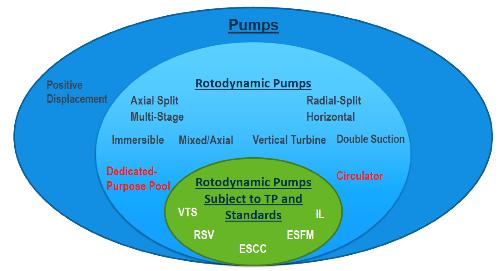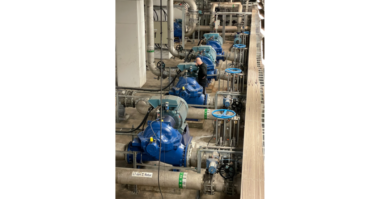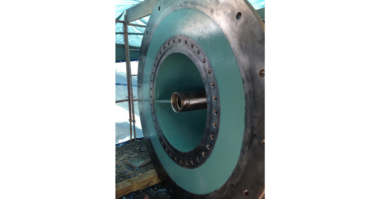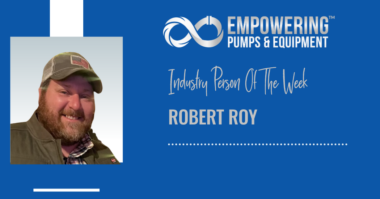Pumps are a major component of modern living. Nearly every aspect of life is driven by a pump at one point or another. From the water we use in our homes, to the air conditioned environments we visit, to the pool we enjoy on a hot day. All require a pump to function properly.
The Why
It has been estimated that 20% of the total energy consumed worldwide is used to run a pump of one sort or another.1 In addition, of those pumps, two thirds use 60% more energy than is required.2
It is because of this the US Department of Energy (DOE) decided to take a closer look at what could be done to reduce pump energy consumption.
The How
As it stands today, there is no Federal energy conservations standards or test procedures for pumps. In June of 2011 the DOE issued a Request for Information (RFI) to gather information related to pumps as a whole to try and understand the full scope. This included the bare pump, the motor and any control system that might come into play. In February of 2013 the DOE published its framework document discussing its considerations for a new energy conservation standard and testing procedure for pumps. Between 2013 and 2014 the DOE’s Pump Work Group worked to refine the proposal and produced 14 recommendations related to pump energy conservation standards and pump testing procedures.
To truly understand what the impact will be we must first understand the scope. Not all pumps will be covered under this regulation. It’s estimated that it only covers about 24% of machinery defined as a “pump”. These pump types consist of:
- End Suction Closed-Coupled (OH7)
- End Suction Frame Mounted (OH0,OH1)
- In-Line (OH3,OH4,OH5)
- Radially Split, Multi-Stage Vertical, Inline Diffuser Casing (VS8)
- Vertical Turbine Submersible (VS0)
The DOE has also identified another class of pumps, Circulators and Pool Pumps, but will address these pumps in a separate rulemaking. These 5 types make up the most commonly used pumps in industrial process and account for the largest amount of waste energy.
While this may seem simple at first, this is actually a very complex process. The “bare pump” is a mechanical design that already allows for top flow efficiencies. To really make a pump efficient you have justify the pump “system” as a whole. This includes the motor and control system. This proposed regulation does just that and take all factors into account in order to determine a pumps peak efficiently and peak operation window. The minimally compliant pump efficiency will be calculated for each pump equipment class based on a function of flow and speed of the pump being rated.
The When
On March 13th or 2015 the DOE issued its Notice of Proposed Regulation (NOPR). It was published on April 1’st and available for anyone to review on the DOE’s website. The final ruling of the regulation is expected to take place in December of 2015. While the final implementation has not been determined yet, full enforcement of a standard and testing usually occurs 180 days after publication of the full ruling with a period of time to reach full enforcement. However, it has been recommended to the DOE to use a phased-in model similar to what the European Union countries did back in 2009. This allowed for a 7 year phase-in of the complete ruling.
So What Does This Mean?
Until the final ruling is released it is difficult to say what the total impact will be. There are many factors that come into play to get a full understanding. Such as:
- Time line for compliance – Will it be a multiyear phase-in process or will there be a “drop dead” date?
- Will the power industry provide a rebate program – This would accelerate the acceptance of the regulation on the end user side and would increase pump demand.
- Enforcement policy for non-compliance – The cost of non-compliance will cause end users to weigh the cost of change versus the cost of time to comply.
What is clear will be the impact to pump manufactures whose current designs do not meet the proposed regulation. If the regulations are modeled after the European Union (EU) standards, pumps that are not inherently efficient in their peer group across all companies that manufacture the same types of equipment will either be removed from the market or will require redesign in order to meet higher efficiency levels. Some estimates put this at up to 20% of the pumps on the market today.
The U.S. DOE regulations on pump efficiency will most likely reshape the pump industry in the United States and pump manufactures that may be impacted by the rulemaking should be watching this process closely.
Source:
1 IEA (2007): Tracking Industrial Energy Efficiency and CO2 Emissions, Paris: International
Energy Agency (IEA).
2 Almeida, Anibal T. et al; EuP Lot 11 Motors Final Report, University of Coimbra, December 2007, p: 68




